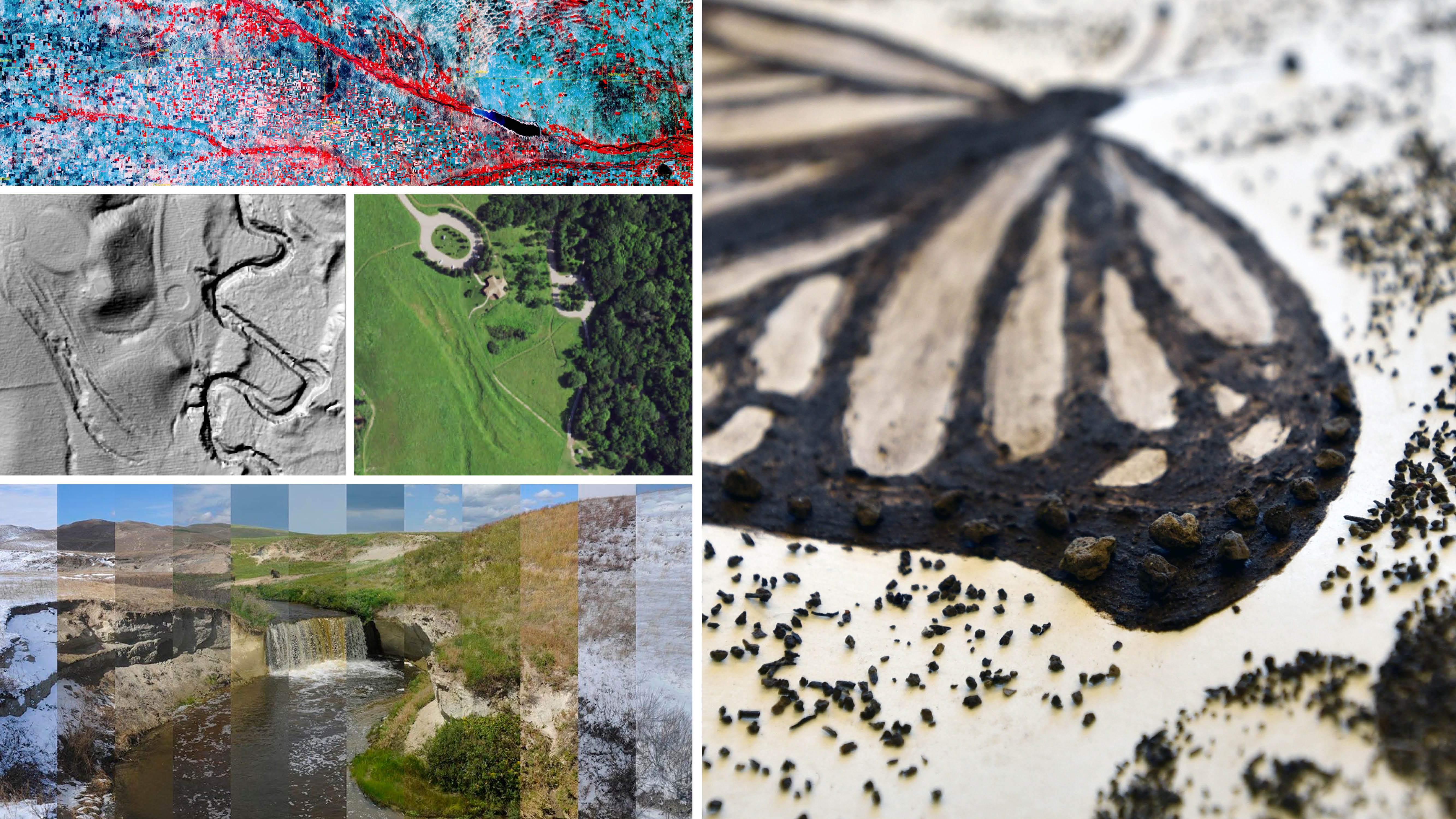
LINCOLN — The School of Natural Resources is hosting an Arts for Conservation Night, featuring "Time and the River," the Platte Basin Timelapse Project, and community conservation art, beginning at 6 p.m. Thursday, Nov. 21, 2019, in Hardin Hall, 3310 Holdrege St. The community engagement event, as well as parking, are free.
The event will open with a gallery-style show, featuring conservation and scientific photography, video, drawings and more. The show will be followed by a viewing at 7 p.m. of “Time and the River,” a multi-media work of chamber music and Platte Basin Timelapse photography. A panel discussion about arts and conservation will follow with Bob Kuzelka, Lincoln Friends of Chamber Music president and former SNR associate professor; and Michael Forsberg, Mike Farrell, and Mariah Lungren, of the Platte Basin Timelapse Project.
“Artists have always been inspired by nature and have used art to compel people to create change in the world,” said Shawna Richter-Ryerson, SNR Community Engagement member. “This is our attempt at bringing together arts of all kinds to share that message and build a conversation around conservation, a topic important to our School’s mission.”
It was the Platte Basin Timelapse project that initially inspired Kuzelka to commission Kurt Knecht, composer in the Glenn Korff School of Music, to write a musical composition.
“When I first saw the Platte Basin Timelapse, it spoke to me,” Kuzelka said. “The images (as they document one spot over time) are filled with rhythm and patterns. You don’t hear sounds, but it presents sounds. The (PRT) is made into a continuum, while music is, too.”
And so he spoke to Mike Forsberg and then Knecht, who wrote “Time and the River,” a nine-movement piece highlighting water, wildlife, atmosphere, space and time.
Afterward, Lungren selected images inspired by the music to tell a visual story — a specialty of the Platte Basin Timelapse crew, which dedicates their time to telling stories of the Platte River Basin through multimedia content.
The long-term documentary project uses more than 60 time-lapse camera systems throughout the 90,000 square-mile Platte River Basin, each camera taking one photograph every daylight hour of every day — since 2011 — a catalogue of more than 2 million photographs that grows daily. Though it seems as though choosing images for a 37-minute musical performance would be difficult, Lundgren said it was surprisingly easy.
“Since I have been a part of the Platte Basin Timelapse project for so many years, I have our archive of imagery almost memorized,” she said. “I selected the images based on personal inspiration I gained from each movement.” Her hope is that people who attend the Arts for Conservation night will gain a deeper appreciation for the Platte Basin watershed.
On the connection between science and art
Forsberg was a conservation photographer long before the Platte Basin Timelapse project began. But because of that work, he knew the project could provide more than just beautiful pictures; it could provide visual data, or documented information, that can be used in the pursuit of science and discovery. It also would provide the art that makes people feel something about a space captured one moment in time.
“(Science and art) are actually more similar than people think,” he said. “To be a scientist or an artist requires tremendous amounts of creativity, driven by curiosity and wonder. … Art provides an important doorway in for conservation then to make a case for or remind people why something matters and what is at stake.”
He quotes renowned field biologist George Schaller, “You can do the best science in the world but unless emotion is involved it is not very relevant. Conservation is based on emotion. It comes from the heart and one should never forget that.”
Those attending the Arts for Conservation Night will have the opportunity to see art created to inspire conservation practices and art created solely for scientific discovery. They will experience hyper-pigmented aerial photographs taken to document plant health; X-ray-like images that reveal how humans have left their mark on earth, the Oregon Trail ruts revealed beneath vegetation; drawings made with soils; historic maps; conservation photography; multimedia pieces; music and more.
“We hope people walk away from our Arts for Conservation Night inspired by the way the two very different disciplines complement one another,” Richter-Ryerson said, “and how, when used together, art and science foster a greater appreciation for our natural world, which we depend on.”
Silent auction to kick-start scholarship fund
In conjunction with the Arts for Conservation Night, SNR will be hosting a silent auction, featuring more than 50 art prints, paintings and multi-media works from the collection of Mary Bomberger Brown, who died earlier this year.
Bomberger Brown was a well-known ornithologist and an associate professor of practice in the school. She was probably best known for her work with endangered bird populations, including Lesser Terns and Plovers in Nebraska, and for mentoring more than 75 students in pursuit of higher education degrees.
In her death, she chose to establish the Mary Bomberger Brown Scholarship Fund through the Nebraska Foundation. The scholarship is specifically for students majoring in fisheries and wildlife at the School of Natural Resources, with a sophomore standing or above, and who have a GPA of 3.55 or higher.
“She expressed her desire to help and reward students who had a desire to learn and excel in this field of study, especially if they had financial constraints that may otherwise burden their abilities to study,” her brother David Bomberger said. “During the process of creating the fund, Mary did not want any credit, notice or recognition. She was content and satisfied knowing her life could make a difference in the lives of future students.”
All money raised from the silent auction will be donated to this fund.
— Natural Resources